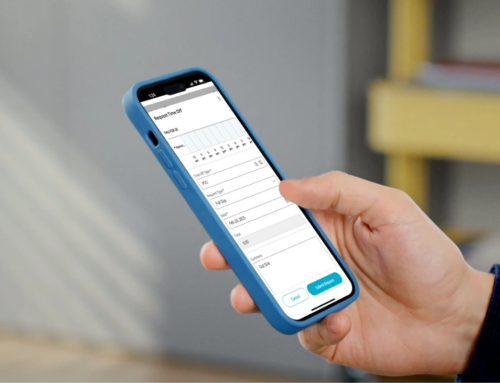As the weather warms up and nature comes back to life, spring also signals a prime opportunity to refresh and realign internal business processes—especially in payroll. For HR and payroll professionals, Q2 is the perfect time to step back, evaluate workflows, and ensure everything is on track for a smooth and compliant second half of the year.
While year-end often gets the spotlight when it comes to payroll reviews, a mid-year payroll checklist is just as important. It helps identify potential issues before they become major problems, ensures compliance with evolving regulations, and unlocks efficiencies that save time and reduce stress later in the year
That's why every HR or payroll team should have a reliable mid-year payroll checklist in place—not just as a best practice, but as a strategic advantage.
Below, we've outlined a comprehensive spring payroll compliance checklist with practical tips and reminders to help you stay ahead of the curve.
1. Review and Update Employee Information
Start your spring payroll audit by reviewing employee records for accuracy. Even small data errors can snowball into compliance issues, delayed paychecks, or incorrect tax filings.
What to check:
- Full name and Social Security Number (SSN) matches
- Updated home addresses for accurate tax jurisdiction assignment
- Correct employee classifications (full-time, part-time, temporary, contractor)
- Proper exempt vs. non-exempt status under FLSA
- New or updated Form W-4 information
- Valid and current direct deposit details
Why it matters: Incorrect classifications or outdated records can lead to payroll errors, benefit discrepancies, or audit red flags from agencies like the IRS or DOL.
2. Double-Check Payroll Tax Filings and Payments
As part of your mid-year payroll checklist, reviewing your payroll tax filings is one of the most critical steps to ensure accuracy and avoid potential penalties.
Key areas to review:
- Federal payroll taxes (Form 941 – Employer's Quarterly Federal Tax Return)
- State income tax and unemployment insurance filings
- Local tax filings, if applicable (e.g., city wage taxes)
Make sure your payroll system reconciles with your tax filings and that there are no discrepancies. If any mismatches exist, it's best to correct them now before they affect year-end reporting.
3. Review Wage and Hour Law Compliance
Each year, minimum wage laws and wage-and-hour regulations evolve, especially at the state and local levels. Ensure you're up to date with all wage compliance requirements.
What to review:
- Federal and local minimum wage updates
- Overtime pay calculations (especially for multiple pay rates or bonuses)
- Tip credit compliance, if applicable
- Meal and rest break policies aligned with state regulations
Example: Several California cities increased their local minimum wages mid-year. Failing to update your payroll system promptly could result in wage violations.
4. Audit Benefits Deductions and Contribution Limits
A thorough review of benefits deductions and IRS limits should always be included in your mid-year payroll checklist to prevent over-contributions and ensure compliance.
Key tasks:
- Verify deductions align with current benefit elections
- Review employer contributions for accuracy
- Update any changes in coverage tiers (employee-only, employee + spouse, family, etc.)
Confirm 2025 IRS contribution limits:
- 401(k)/403(b): $23,500 (plus $7,500 catch-up for employees age 50+)
- Health Savings Account (HSA): $4,300 individual / $8,550 family
- Flexible Spending Account (FSA): $3,300
If your payroll system isn't configured to recognize these limits, employees may overcontribute—triggering tax issues.
5. Revisit Garnishments and Court Orders
Wage garnishments are legally required deductions—but they can be easy to overlook after initial setup. A quick spring audit helps ensure everything is applied accurately and within limits.
Audit tips:
- Verify all garnishments are correctly calculated
- Confirm payments are sent to the appropriate agencies
- Remove expired or satisfied garnishment orders from the system
Common garnishment types:
- Child support
- Tax levies
- Student loan collections
- Bankruptcy or court-mandated repayments
Mismanaging garnishments can result in penalties, lawsuits, or agency audits, so it's critical to keep everything current.
6. Clean Up Your Payroll System
A mid-year system cleanup improves efficiency and reduces year-end chaos. Use this time to organize your payroll software.
Cleanup checklist:
- Archive terminated employee records per your retention policy
- Deactivate outdated pay codes and deduction codes
- Consolidate duplicate earning codes
- Standardize naming conventions for better reporting
Why it matters: A clean, organized system reduces manual errors, shortens processing time, and ensures accurate reporting across HR, finance, and tax teams.
7. Reconcile Paid Leave and Time-Off Policies
If your organization is refining its leave policies, now's the time to ensure those updates are reflected in your systems—and documented as part of your mid-year payroll checklist.
What to review:
- Current PTO and sick time balances
- Carryover policies and maximum accrual thresholds
- Compliance with state or local paid sick leave laws
- Tracking of non-traditional leave policies (e.g., mental health days, parental leave, bereavement leave)
Miscalculated PTO or incorrect leave balances can quickly escalate into payroll discrepancies and employee dissatisfaction.
8. Evaluate Mid-Year Compensation Adjustments
Spring is a common time for mid-year pay raises, role changes, and incentive programs. Make sure your payroll system reflects these updates accurately.
Key tasks:
- Update new pay rates or job classifications
- Process retroactive pay if applicable
- Review bonus or commission structures for compliance and taxation
- Adjust benefit contribution levels based on salary changes
Changes in compensation may also impact benefits eligibility or contribution tiers, so coordinate closely with your benefits team.
It may still be early in the year, but beginning year-end planning now can prevent last-minute stress later.
Start prepping by:
- Verifying employee names and SSNs for W-2 accuracy
- Reviewing ACA eligibility tracking for 1095-C forms
- Confirming locations and roles for multi-state reporting
- Building a preliminary year-end reporting calendar
Bonus tip: Touch base with your payroll provider now to learn what tools, reports, or year-end prep services they offer.
Spring and summer are often when new laws are introduced or finalized—many with direct impacts on payroll compliance. Stay proactive by keeping tabs on new requirements.
What to watch for:
- Retirement plan mandates (SECURE 2.0, state-sponsored IRA programs)
- Pay transparency laws
- EEO-1 reporting deadlines
- Paid leave law changes
- Digital labor law poster compliance (especially for remote teams)
Consider subscribing to compliance updates or working with an HR compliance partner to ensure nothing slips through the cracks.
Keep Your Payroll Processes in Full Bloom
Payroll professionals know that staying organized and proactive is key to success. By following this mid-year payroll checklist, you can reduce risks, avoid costly errors, and build momentum for a strong finish to the year.
Whether you're updating tax records, auditing deductions, or prepping for year-end, this mid-year payroll checklist offers a clear path to compliance and peace of mind.
A little spring maintenance now means fewer surprises later—helping you stay compliant, efficient, and focused on supporting your workforce.
Bonus: Want Help Streamlining Payroll and Compliance?
Whether you're reviewing your systems, preparing for audits, or just want more peace of mind, Inova is here to help. Our unified payroll and HR platform makes managing payroll compliance easier—with built-in tools, expert support, and flexible options to meet your needs. Get your personalized demo.




